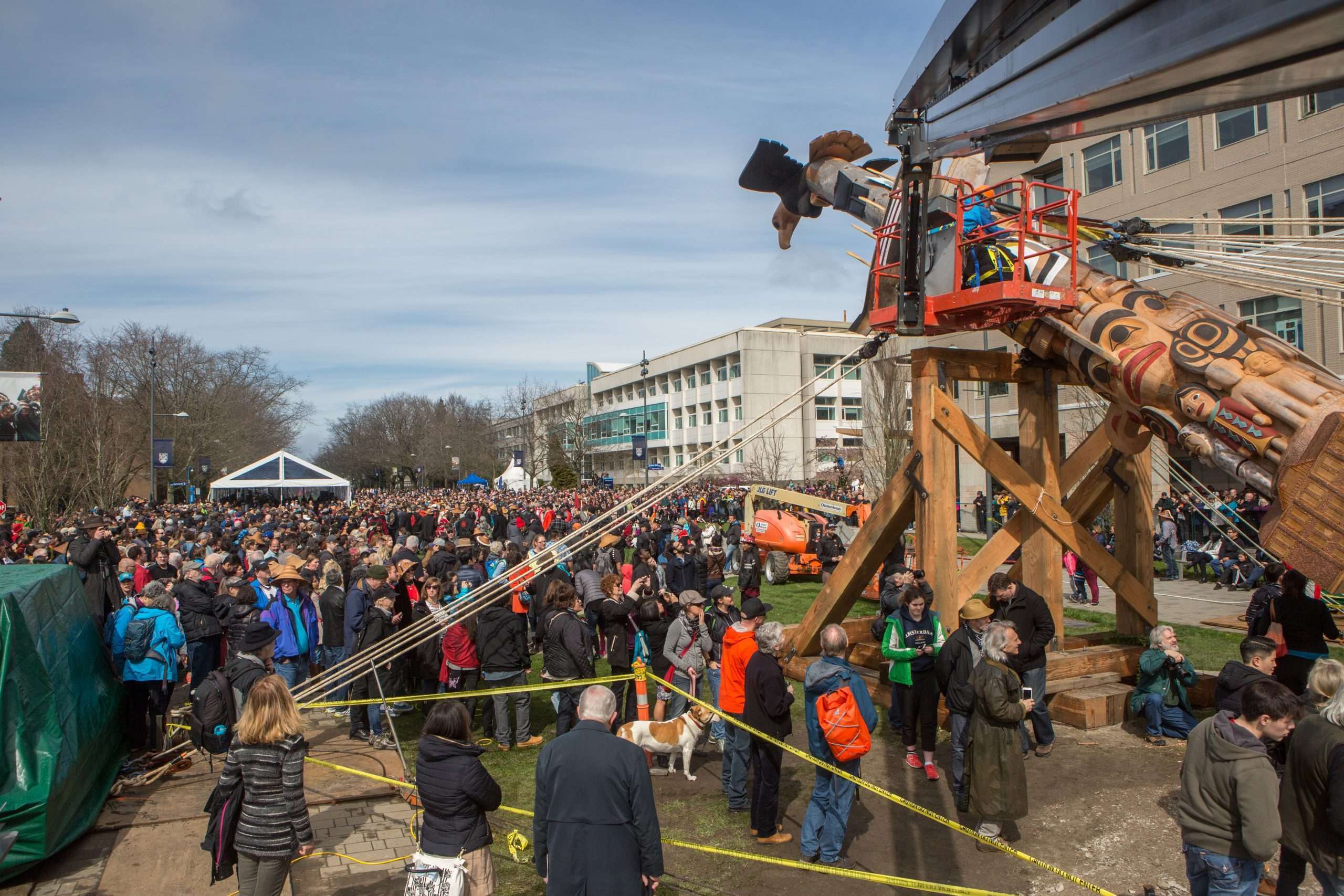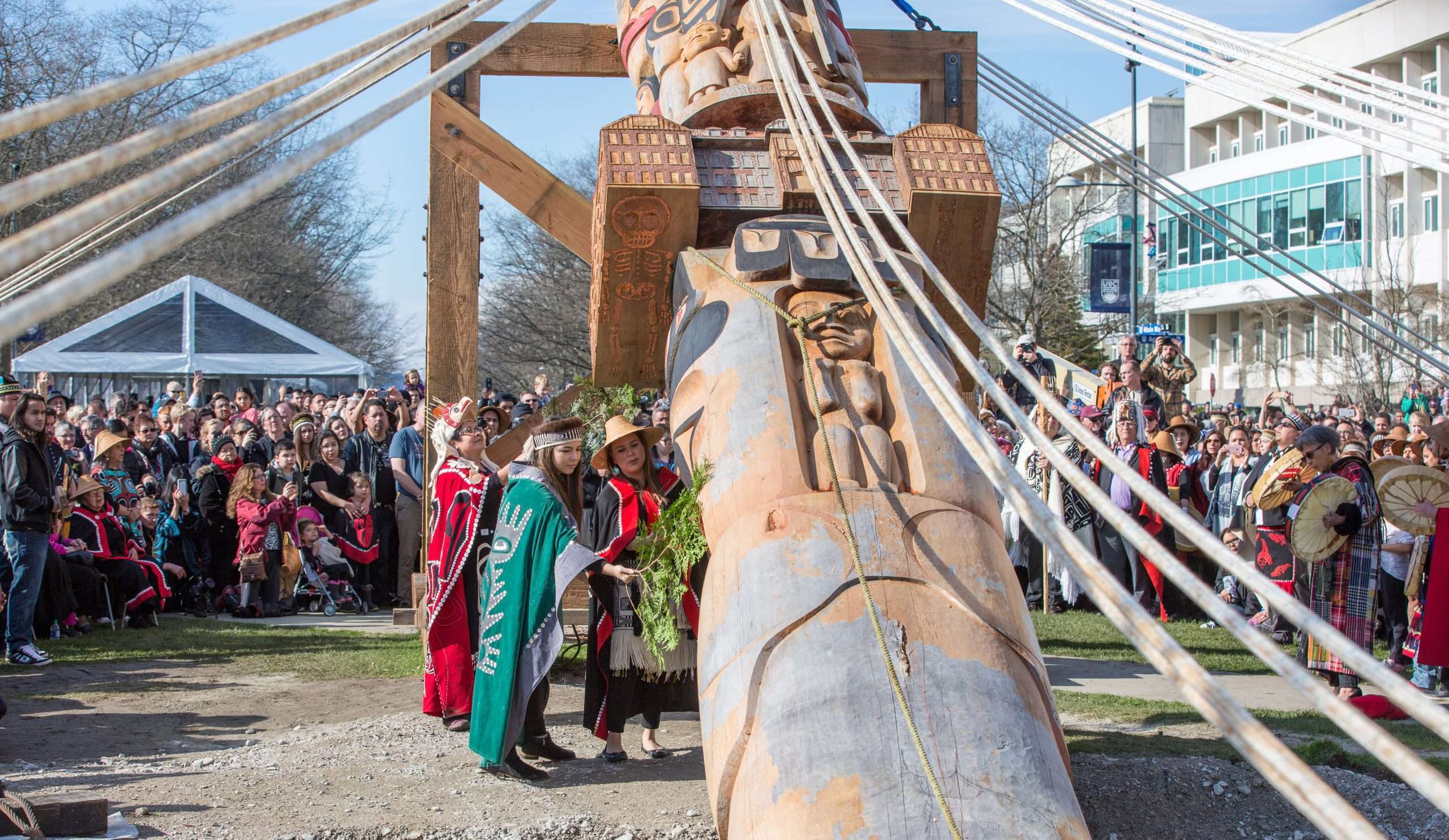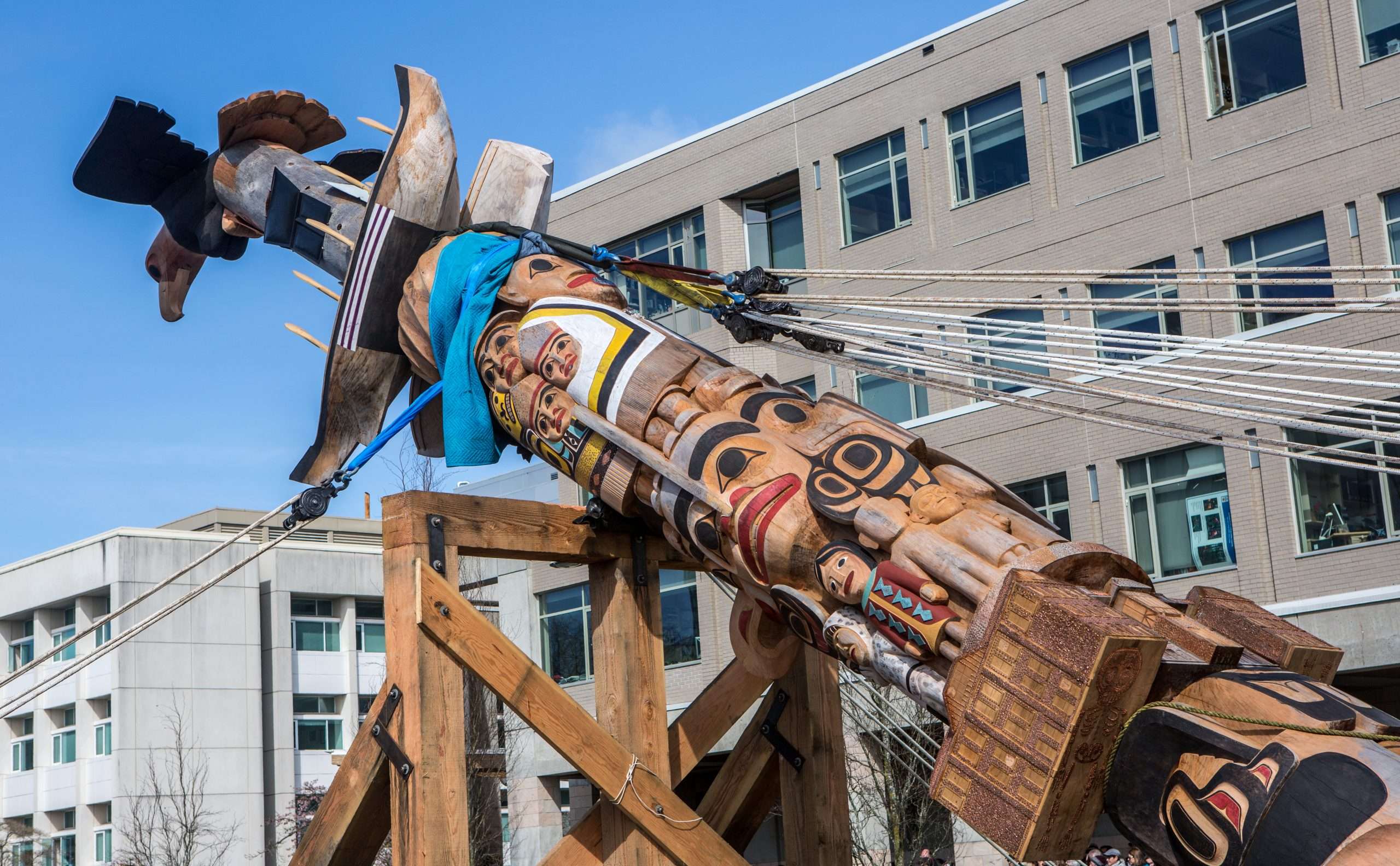Reconciliation Pole Raising
In a momentous occasion celebrating reconciliation and cultural heritage, Pro-Tech Industrial Movers partnered with BEL Contracting to raise a Reconciliation Pole at the University of British Columbia (UBC). This totem pole was an 800-year-old red cedar masterpiece, beautifully carved by Haida artist James Hart. Commissioned by the Audain Foundation and UBC, this symbolic art piece aimed to represent the dark history of residential schools and the path toward reconciliation between Indigenous and non-Indigenous communities in Canada.
Key Project Information
- Project Type:
- Timeline:April 2017 (Completed)
- Client:University of British Columbia
- Location:Vancouver, BC
Scope of Work
Collaborating closely with Pro-Tech Industrial Movers, the teams engineered a mechanism that enabled the totem pole to be raised using the traditional method of pulling on ropes. This was particularly challenging given the sheer scale and weight of the pole. During the ceremony, a staggering force of 32,000 lbs was needed to lift the totem pole to its vertical position. This force was generated by hundreds of community members pulling on more than 3,500 feet of rope. Once the pole was upright, which took roughly 10 minutes, BEL Contracting moved swiftly to secure the ropes and complete the backfilling to ensure the totem pole would stand firmly in place. Through these various stages, the teams not only provided technical expertise but also demonstrated a deep respect for the cultural and historical significance of the project.
BEL Contracting was responsible for the initial site preparation, which involved excavating a hole to serve as the base for the totem pole. This also included laying out piles of gravel and rocks, which were later used in the traditional Haida ceremony for raising the pole.
Unique Features and Challenges
What set this project apart were its unique features and challenges. The totem pole was not just a piece of art but a symbol laden with historical and emotional weight. It featured 6,000 copper nails, each hammered into the wood by survivors of residential schools, volunteers, and school children. These nails served as a memorial to Indigenous children who died in residential schools between 1890 and 1996. The project was more than just a technical exercise; it was a community and culturally driven endeavor, bringing hundreds of people together to contribute to the physical work required to erect the pole.
In successfully completing this project, Pro-Tech Industrial Movers and BEL Contracting did more than just execute a construction job; they participated in creating a lasting monument to Canada’s history and a step forward in the path toward reconciliation.




